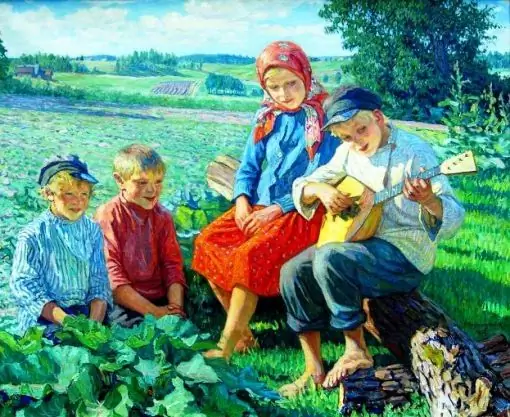Balalaika is a traditional musical instrument that has become a symbol of Russian culture. You can dance to the balalaika, sing songs and ditties. This musical instrument has become widespread. Now the balalaika is part of most orchestras of folk musical instruments.

The history of the emergence of balalaika
There are several versions of the origin of the balalaika. Many believe that the balalaika was invented in Russia, according to other sources, the balalaika originated from the dombra. Some researchers suggest that this tool was borrowed from the Tatars even during the Tatar-Mongol rule.
Researchers of folk instruments believe that the word "balalaika" comes from the words "balakat" or "balabolit", which means to chatter or empty phonies. Probably, this name of the instrument arose because of its specific strumming sound.
The first mention of the balalaika in written sources dates back to 1688. In the 17th century, the balalaika was an instrument of buffoons. During the reign of Alexei Mikhailovich, a real war was declared on folk instruments. By order of the king, domras, balalaikas, gusli and horns were to be collected and burned. After the death of the tsar, the struggle with folk instruments ceased, and the balalaika became widespread among the peasantry.
In the middle of the 19th century, musician and educator Vasily Andreev improved the balalaika. On the basis of a simple folk instrument, models of balalaikas of different sizes were developed. Vasily Andreev was not only a virtuoso musician, but also a popularizer of folk culture. He created the first orchestra of folk instruments, which successfully toured Russia and Europe.
Until the middle of the 20th century, balalaika was very popular among peasant families. The skills of playing it were passed from father to son. People danced and sang to the balalaika. After the collapse of the USSR, young people moved from the countryside to the cities, and there was no one to pass on the tradition of playing the instrument to the old people. Balalaika has lost its former popularity.
Balalaika today
Fortunately, the balalaika has recently begun to gain popularity among the youth. This is due to the emergence of interest in their roots, in the history and culture of their people, including music.
The balalaika is a versatile instrument that gets along well with just about any instrument in a country ensemble. Moreover, the balalaika perfectly conveys the personal characteristics of the performer.
The balalaika is still the main instrument in any folk orchestra. However, the performances of such orchestras do not reflect the true folk instrumental tradition. Where can a city person hear the sound of a village balalaika?
Thanks to the efforts of ethnographers and folklorists, the folk tradition has not died. From the middle of the 20th century, researchers began to record folk tunes in folklore expeditions. Today, you can hear an authentic village balalaika at concerts of folklore and ethnographic groups. Such ensembles strive to popularize authentic folk culture and often hold evenings for folk culture lovers. At the evening you can learn about Russian traditions, hear old songs recorded in folklore expeditions and, of course, dance to the balalaika.






